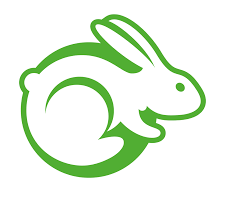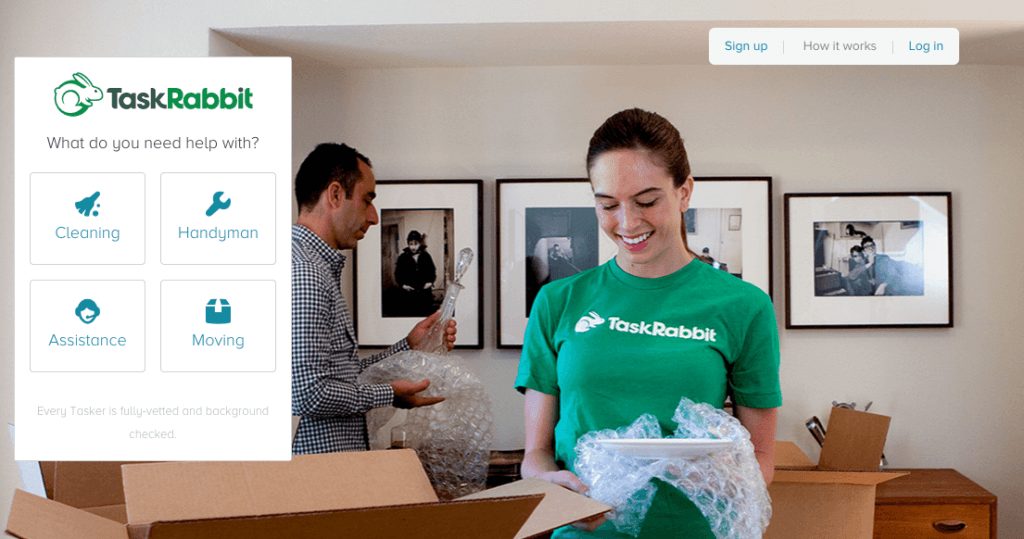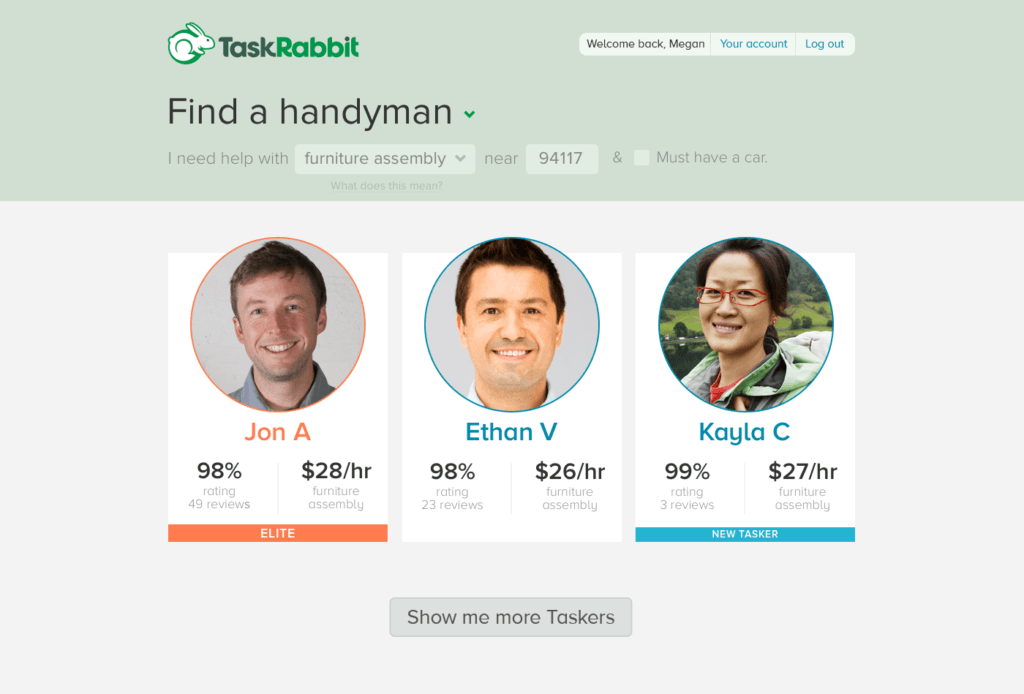TaskRabbit is using open innovation to tap an unrealized labor market, but can it sustain its growth?

TaskRabbit is your new handyman, mover, grocery shopper, and more. Using open innovation, or “crowdsourcing,” TaskRabbit connects demand for and supply of contractual labor.

Overview
TaskRabbit is your new handyman, mover, grocery shopper, and more. Using open innovation, or “crowdsourcing,” TaskRabbit connects demand for and supply of contractual labor. TaskRabbit was founded in 2008 and in its 10 years in operation, the company has raised $37.68 million in funding.{8} In late 2017, the company was bought by IKEA Group for an undisclosed amount.{2} Their open innovation model offers a unique opportunity to enter a highly capital-intensive business (labor supply) with very little capital itself – TaskRabbit only employed 68 people in 2017.{8} However, open innovation, in particular, the two-sided platform model that TaskRabbit employs, comes with inherent risks due to relationship between the company, external innovators (“Taskers”) and customers.{3} This essay unpacks TaskRabbit’s two-sided platform business model and presents the opportunities and challenges facing the company as it looks to sustain its growth.
The Model
The TaskRabbit value proposition is an online labor marketplace that offers competitive, transparent pricing, and a truly unlimited variety of services by leveraging a network of innovators, the “Taskers,” and allowing them to decide what work they are willing to get paid to do. Open innovation allows TaskRabbit to differentiate itself in two ways: first, by improving customer experience within an existing market (handyman services), and second, building an all-new market for low-skill labor. This new market is undefined, ranging from furniture building to grocery shopping, driven by customer demand. A customer starts by entering their required task details, and subsequently, sees a complete list of available Taskers with their profiles, hourly rates, and reviews.{11} From there, the customer picks a Tasker and communicates with them through the TaskRabbit application to finalize logistics. Upon completion of the task, customers will pay Taskers directly through either Braintree or Stripe (depending on country).{9} To ease customers’ fears about allowing a stranger into their home, TaskRabbit requires background checks on all Taskers and offers a $1 million happiness pledge to cover any damages.{10}

Challenges
Despite the benefits, there are also risks associated with using an open innovation model. Competitive side-by-side pricing provides a great consumer experience, but less-so for Taskers who are pressured to offer lower service rates.{4} In 2014, TaskRabbit tried to address this concern by transitioning from a bid auction system to the current matching system, which uses an algorithm that only shows certain Taskers – with their hourly rates – to customers.{6} Despite good intentions, the change was disliked by many Taskers who felt that the matching system limited their revenue potential.{6} Unfortunately, there will always be an inherent challenge in finding an ideal solution because incentives between the two parties do not always converge: TaskRabbit optimizes for customer experience, its own Net Promoter Score, and low costs, whereas Taskers want to optimize personal revenue with visibility and higher rates.{6} The erosion of the standard company-employee relationship also presents a challenge, restricting TaskRabbit’s ability to control its own customers’ experiences. Taskers are independent contractors without employee benefits or protections, yet a customer’s impression of the TaskRabbit brand is directly tied to their experience with Taskers. Good online user experience and insurance offerings aside, TaskRabbit has limited control of this critical component in their value proposition.{3}
What comes next?
As the open innovation model grows in global adoption, regulators may be looking closer at its impact on wage and labor standards for companies like TaskRabbit. Many critics of the model’s use here question whether Taskers are being exploited for minimum wage labor, with no benefits, and little-to-no job protection.{1} Uber, which follows a similar business model, has already faced this pressure in European markets and in May 2017, extended their benefit coverage for European drivers.{7} Does TaskRabbit have a vested interest in getting ahead of this risk by offering their Taskers employee benefits as well?
Another final question moving forward is how TaskRabbit’s identity will be impacted through its acquisition by IKEA Group. In a Forbes article, Blake Morgan argues that the purchase was a perfect fit for IKEA Group, providing the Swedish brand greater access to its customers, but is this the right fit for TaskRabbit?{5} TaskRabbit built demand for a limitless market of freelance labor, yet by connecting itself to IKEA, risks constricting itself into hardware services. The TaskRabbit platform even has a distinct page for “IKEA Services” instructing IKEA customers on how to get a TaskRabbit to come build recently purchased IKEA furniture. Considering all the above, was the IKEA acquisition an inhibitor or prohibitor to TaskRabbit’s growth potential?
Only time will tell.

(Word Count: 746)
Citations
{1} Collinson, Paul and Lunn, Emma. “Boring chore? Airtasker or TaskRabbit could help – at a price.” The Guardian, March 10, 2018. [https://www.theguardian.com/money/2018/mar/10/boring-chore-airtasker-or-taskrabbit-could-help-at-a-price].
{2} IKEA Group (Ingka Holding B.V. and its controlled entities). “IKEA Group signs agreement to acquire TaskRabbit.” press release, September 25, 2017. IKEA website, [https://www.ikea.com/us/en/about_ikea/newsitem/092817-IKEA-Group-signs-to-acquire-TaskRabbit#], accessed November 2018.
{3} K. Boudreau and K. Lakhani. How to manage outside innovation. MIT Sloan Management Review 50, no. 4 (Summer 2009): 68–76.
{4} Kessler, Sarah. “The Gig Economy Won’t Last Because It’s Being Sued To Death.” The Fast Company, February 17, 2015. [https://www.fastcompany.com/3042248/the-gig-economy-wont-last-because-its-being-sued-to-death].
{5} Morgan, Blake. “3 Lessons Learned From Ikea’s Acquisition Of Gig Economy Startup TaskRabbit.” Forbes, September 30, 2017. [https://www.forbes.com/sites/blakemorgan/2017/09/30/3-lessons-learned-from-ikeas-acquisition-of-gig-economy-start-up-taskrabbit/#35e3085837a8].
{6} Said, Caroline. “TaskRabbit makes some workers hopping mad.” SF Gate, Updated July 18, 2014. [https://www.sfgate.com/technology/article/TaskRabbit-makes-some-workers-hopping-mad-5629239.php].
{7} Schechner, Sam. “Uber Bows to Pressure, Offers Some Health Benefits to European Drivers.” The Wall Street Journal, Updated May 23, 2018. [https://www.wsj.com/articles/uber-to-offer-limited-health-insurance-to-european-drivers-1527082557].
{8} Source: [TaskRabbit Company Profile], Capital IQ, Inc., a division of Standard & Poor’s.
{9} TaskRabbit. “How do I pay My Tasker.” https://support.taskrabbit.com/hc/en-us/articles/204411560-How-Do-I-Pay-My-Tasker-, accessed November 2018.
{10} TaskRabbit. “How it works.” https://www.taskrabbit.com/how-it-works, accessed November 2018
{11} TaskRabbit. “How to Hire a Tasker.” https://support.taskrabbit.com/hc/en-us/articles/210861763-How-to-Hire-a-Tasker, accessed November 2018.
{12} TaskRabbit. “IKEA Services.” https://www.taskrabbit.com/ikea, accessed November 2018.
{13} TaskRabbit. “TaskRabbit Support.” https://support.taskrabbit.com/hc/en-us/articles/204411090-Is-TaskRabbit-in-my-city-, accessed November 2018.



Great article – as an avid user of Task Rabbit in my New York days, there were several facts in your article that I wasn’t aware of, especially the acquisition by Ikea. I do believe that Ikea could offer the capital and resources needed for Task Rabbit to further expand its offerings, but hopefully it has learned from peers both within and out of the industry that often you need to leave start-ups alone after acquisition without forcing a certain culture or infrastructure. I’m optimistic that while Ikea may be biased towards more hardline and hardware related services that Task Rabbit would continue to offer a variety of services through its contractual labor model via crowdsourcing and realize the demand may not single handedly come from areas that Ikea places focuses on.
With regards to your first question though, on whether Task Rabbit should get ahead of potential labor benefit risks, I think they definitely should. If you look at the highest rated taskers, these individuals have often put in numerous hours per week over what would be considered “part-time” or “contractual labor” employment. However, I wonder if a group of taskers decide to bring the issue to Management, would all taskers agree? Likely those that have reaped the benefits form the platform would like to keep their job as is should the Company decide to compromise their revenue stream in favor of providing benefits. It would be interesting to see how Task Rabbit confronts this issue as it continues to grow.
I believe that the Task Rabbit acquisition by IKEA will be great for both in the long run and don’t think that Task Rabbit’s identity will be impacted in any way whatsoever. First of all, I’m positive that almost no one knows about this and it IKEA has not advertised anywhere in Task Rabbit’s webpage. Moreover, I would argue that Task Rabbit’s main value proposition is around democratizing access to handymen specifically. Even though “taskers” can also provide other services such as delivery or grocery shopping, the vast majority of services offered by the company are related to classic handyman tasks such as moving, furniture assembly, repairs, painting, installations, etc. This said, even if the association with IKEA was publicly made to everyone, I believe that there would be no significant impact since IKEA is a brand intricately related to the handyman business.
In response to your question, I do not think that the IKEA acquisition will constrict TaskRabbit to hardware services. Overall, I believe the partnership will be beneficial, as it will allow TaskRabbit incremental access to capital. In addition, there are several synergies that can be leveraged through this acquisition. As mentioned in the case, the TaskRabbit platform has a unique page for “IKEA Services,” which helps instruct IKEA customers on how to get a TaskRabbit to build their furniture. I view this as a positive for both companies, as it will drive incremental business for TaskRabbit while helping to solve a pain point for IKEA – mainly that their furniture can be difficult to assemble. For these reasons, I believe the acquisition will be an inhibitor to TaskRabbit’s future growth. Furthermore, through this partnership IKEA might be able to help TaskRabbit resolve some of its impending wage and labor issues.
This may be controversial, but I disagree with the notion that employees deserve benefits. This is closer to a gig economy than Uber was, since these services are really ad hoc in nature. The platform essentially serves as a craigslist equivalent for labor services, and the notion that these individuals are employees of the company would be akin to ebay sellers saying that they are employees of ebay — I believe the comparison falls flat.
In terms of whether or not Task Rabbit can sustain growth, I think it relies on a larger macro trend of millenials straying away from conventional, full-time employment and pursuing more independent paths, including work on the gig economy. Since the working population of Task Rabbiters is predominantly comprised of people in their 20s and 30s, this macro trend of people seeking employment creates a natural tailwind for Task Rabbit to sustain its growth, with the unspoken understanding that the company retains its value proposition for both the laborers and the buyers.
This research project poses an interesting question about the role of companies in establishing a safety net for independent contractors. Companies operating in the gig economy are in a regulatory grey area — it’s unclear whether independent contractors working 40+ hours per week are entitled to certain protections like healthcare benefits. Ultimately, I think it is the role of the government to determine whether companies are responsible for providing these protections. Currently, workers are classified as employees (as compared to independent contractors) if their work meets conditions (i.e. requires training, involves scheduled shifts, uniforms, etc.). As a society, we need to determine if we are satisfied with that classification and seek legal recourse if we are not. However, in the absence of any clear regulations, the onus is on individual companies to determine what types of protections they want to establish for their workers. As the gig economy expands, people will have more options for flexible. If TaskRabbit wishes to attract the best talent, I believe it is in their best interest to provide certain benefits for their workers to ensure retention over time.
This is a very interesting article. I think TaskRabbit is very smart by leveraging open innovation/crowdsourcing to solve the pain point in the market. I also think that the acquisition by IKEA is the right move for both IKEA and TaskRabbit. Both businesses clearly have a strong synergy. For example, TaskRabbit is very famous for finding a handyman for home services. Therefore, both companies share customers. IKEA can definitely help TaskRabbit expand their home services customer base, creating a scale effect that TaskRabbit can hardly create on their own. While IKEA might indirectly limit TaskRabbit services into home category, if we compare the value of customer expansion from IKEA versus the impact that TaskRabbit can create by broadening their scope of services on their own, I think the value that IKEA can provide is much higher. TaskRabbit is ,therefore, better off having IKEA as partners. Also, on a positive note, TaskRabbit still have an option to expand their services to other categories, and that could be seen as option to diversify business for IKEA as well.
Great article! I think Task Rabbit is a good example of the “Gig Economy” trend we are seeing with companies such as Uber, Rover, etc that allow independent contractors to work more flexibly on their own schedule. You bring up a lot of the biggest challenges with lack of benefits and pressure to lower prices. While providing a source of new jobs and potential for empowerment, many of these services are so centered on customer service that it comes at the detriment of these service providers. From a moral perspective, I also think that services like task rabbit can dehumanize workers who you interact with on a one-time basis as a maching/means to an end, and who you may never have to see in person, which further amplifies the issue.
For the question about Ikea- I’d be curious to see what percentage of tasks are currently in the hardware/furniture assembly category. If it is a large enough percent, branding it under Ikea, and driving more traffic towards the service may actually be a net positive.